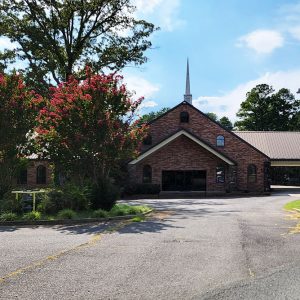calsfoundation@cals.org
Seventh-Day Adventists
The Seventh-day Adventist Church (SDA) is a Protestant denomination characterized by its observance of the biblical Sabbath (Saturday), its emphasis on the imminent second coming of Jesus Christ, and its fundamental creed, “The Bible, and the Bible alone.” Officially founded in 1863 by Joseph Bates, James White, Ellen G. White, and J. N. Andrews, the SDA Church grew out of the Millerite movement of the mid-1800s. Its founder, William Miller, preached from his farm in Low Hampton, New York, that the second coming (Advent) of Jesus Christ would happen on October 22, 1844. The day passed without incident and became known as the “Great Disappointment.” Many of Miller’s followers disbanded following this, but a small group of Adventists continued their belief that Christ’s second coming was imminent. This Adventist group was loosely led by Joseph Bates, who was a strong proponent of Sabbath-keeping.
For the next twenty years, Adventists followed Bates, but it was the writings of Ellen White that ignited the Adventist movement. White’s many visions convinced other Adventists that she possessed the gift of prophecy, and she became a central spiritual leader for the Adventists. Finally, on May 21, 1863, in Battle Creek, Michigan, the Seventh-day Adventist Church announced its formation, and the church established a platform of missionary work and revivals to attract new members. This platform was taken directly from a vision Ellen White had in 1848 when she saw the “Three Angels’ Messages” traveling like streams of light around the world. SDA members interpreted this vision to mean that new converts could be made to the movement.
In addition to marking the Sabbath on Saturday, rather than on Sunday as is more common in other Christian denominations, Adventists are also well-known for emphasizing healthy lifestyle habits. Many SDA members practice vegetarianism and adhere to the kosher laws set forth in the book of Leviticus, such as abstinence from shellfish, pork, and other “unclean” foods. Seventh-day Adventists also practice abstinence from illegal drugs, tobacco, and alcohol.
The Civil War and Reconstruction hampered membership growth in the SDA Church, especially in the South, causing Arkansas not to see SDA evangelical work until 1877, even though the Church sent missionaries overseas as early as 1874. Missionaries (who were sent into an area to perform evangelism or ministries of service) and canvassers (who sold SDA books and magazines door-to-door) in Arkansas often delivered their messages from the back of a horse in circuit-rider fashion. Arkansas at this time, however, presented some particular cultural obstacles to SDA doctrine. Some of the early SDA missionaries to Arkansas often had difficulty overcoming the almost universal use of tobacco by Arkansans. There was also resistance to SDA’s celebration of the Sabbath on Saturday. Elder D. A. Wellman, a lay canvasser, approached the town of Argenta—now North Little Rock (Pulaski County)—in the spring of 1884, hoping for conversions. Argenta was a train town, so nearly all of the town’s 500 residents were employed by railroads. One of the first three converts to the SDA message in Argenta was quickly fired from his railroad job, as all railroad employees were expected to work on Saturdays.
In January 1885, J. G. Wood baptized five new members in Springdale (Washington County), after which he organized a church of thirty-nine members, ordained an elder, and established the first Seventh-day Adventist church in Arkansas. The members quickly laid the foundation and built their twenty-six-by-forty-foot church, which was only the second church built in Springdale. From May 15 to May 21, 1888, a organizational meeting was held in Springdale for the purpose of establishing a state conference. Delegates from nine of the ten existing churches—Brentwood (Washington County), Cincinnati (Washington County), Hindsville (Madison County), Little Rock (Pulaski County), Malvern (Hot Spring County), Mount Pleasant (Izard County), Springdale, Star of the West (Pike County), and Siloam Springs (Benton County) attended.
Membership grew from 273 in 1890 to 509 in 1897, but dropped to 275 members in 1899. On January 4, 1902, the church in Little Rock was reorganized with twelve members, meeting in a room at the Little Rock Sanitarium until the group built a church on Jefferson Street in 1908. The first African American SDA church was organized in Little Rock on July 12, 1912. Terrence Roberts, one of the Little Rock Nine, was a member of this church before moving to Los Angeles, California, in 1958 to finish high school.
Church records show a steady growth of new churches in Arkansas throughout the twentieth century. SDA churches in cities such as Hope (Hempstead County), established in 1976, and Arkadelphia (Clark County), established in 1981, organized later in the century, while other SDA churches in Arkansas faded away, were disbanded, or merged during the same time period.
By 2012 in Arkansas, there were two areas where SDA churches are most concentrated. The first was northwestern Arkansas, including churches in Gentry (Benton County), Siloam Springs, Decatur (Benton County), Fayetteville (Washington County), Springdale, Bentonville (Benton County), and Rogers (Benton County). Central Arkansas was the second area of concentration. Churches in this area included Little Rock, North Little Rock, Conway (Faulkner County), Searcy (White County), Benton (Saline County), Pine Bluff (Jefferson County), Hot Springs (Garland County), and Bonnerdale (Hot Spring County).
Gentry is the location of the only SDA boarding academy (Ozark Adventist Academy) in Arkansas; it serves grades 9–12. However, SDA churches do sponsor eight additional schools in Arkansas, which are located in De Queen (Sevier County), Bentonville, Bonnerdale, Harrison (Boone County), Hot Springs, Little Rock, Gentry, and Springdale. Among the larger churches are Gentry, Little Rock, Hot Springs, Springdale, and Bentonville. In 2003, Ouachita Hills College, a non-accredited school that is a project of the Ouachita Hills Ministries, opened in Amity (Clark County) to provide higher education in Seventh-Day Adventist theology and practical skills. In Arkansas, by 2012, there were fifty-eight Seventh-day Adventist churches, twelve companies, and four groups. (The idea behind this division is for a group to become a company and eventually become a church.) These seventy-four organizations support nearly 12,000 Seventh-day Adventist members.
For additional information:
Arkansas-Louisiana Seventh-Day Adventist History. https://arklasdahistory.org/ (accessed August 22, 2022).
Beeler, Charles R. A History of Seventh-day Adventists in Arkansas and Louisiana 1888 to 1996. Shreveport, LA: Arkansas-Louisiana Conference of Seventh-day Adventists, 1996.
Larry LeMasters
LeMasters’ Antique News Service

 Bonnerdale Church
Bonnerdale Church 



Comments
No comments on this entry yet.